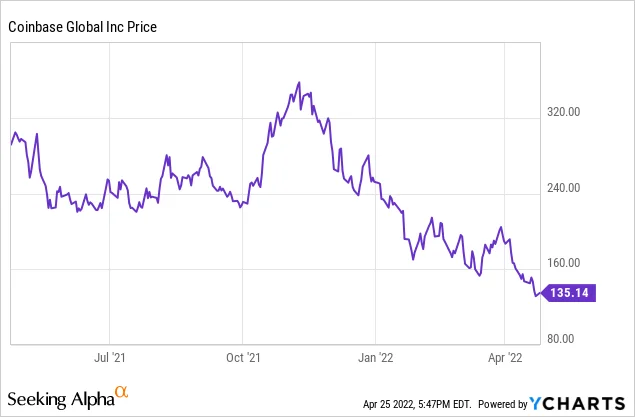Here we go again. The quarterly earnings ritual, where Wall Street dons its green eyeshades and tries to fit the sprawling, chaotic, beautiful future of digital assets into the neat little boxes of an Excel spreadsheet. This time, the two titans in the ring were MicroStrategy (MSTR) and Coinbase (COIN), and their results weren’t just a report card—they were a declaration of two profoundly different philosophies for how to build, and bet on, the next chapter of the internet.
When I see these two companies side-by-side, I don’t just see tickers. I see a fundamental choice. It’s the choice between betting on the gold itself, or betting on the man building the railroads, the towns, and the banks for the entire gold rush. The Q3 numbers just gave us a crystal-clear snapshot of which strategy is winning right now.
Let’s start with MicroStrategy. You have to admire the sheer, unadulterated conviction of Michael Saylor. His company’s strategy is elegantly simple: use the cash flow from its legacy enterprise software business to buy Bitcoin. And then buy more Bitcoin. And when they’re done, buy even more. It has transformed from a software company into what is essentially the world’s first corporate Bitcoin treasury—a publicly-traded proxy for the granddaddy of all digital assets.
MSTR is a bet on a single, monumental idea: that the `btc price` is destined for heights we can barely comprehend. The company’s balance sheet is a testament to this faith, with its holdings now topping 640,000 BTC. An analyst at TD Cowen even projects they could own nearly a million coins by 2027, over 4% of the total supply. This is the kind of strategy that feels less like corporate finance and more like a chapter from a Neal Stephenson novel. It’s a bold, all-in gambit on digital scarcity.
But this purity comes at a price. Because MSTR has to report the paper gains and losses on its Bitcoin holdings each quarter, its earnings reports are a rollercoaster. Their net income swings wildly based on the market’s mood, which explains why they’ve missed analysts' expectations in six of the last eight quarters. Are you investing in a business, or are you just buying a leveraged tracking stock for Bitcoin? And does that distinction even matter if you believe in the ultimate destination?
Then you have Coinbase. If MicroStrategy is building a vault, Coinbase is building the entire digital city around it. They are the architects of the on-ramps, the trading floors, the financial services, and the developer tools for the burgeoning crypto-economy. Their business model is a beautiful, diversified machine. They earn revenue from transaction fees—in simpler terms, they run the toll roads of the crypto world—but also from staking services, institutional custody, and their role in the USDC stablecoin.

And in Q3, the strength of that model was on full display. Coinbase didn’t just meet expectations; it blew them away. They reported earnings of $1.44 per share when Wall Street was looking for $1.11, on revenue that also beat forecasts. You could almost feel the collective exhale from investors in the after-hours session, the `coin stock price` ticking up—a reaction detailed in reports like Coinbase Stock Climbs After Q3 Earnings: Here's Why - Coinbase Global (NASDAQ:COIN)—as the numbers confirmed that the business was not just surviving, but thriving. They grew their team, kept expenses in check, and pulled in nearly a billion dollars in transaction revenue alone.
When I first saw their partnership with Citigroup, which allows Citi’s massive institutional clients to move fiat currency through Coinbase’s platform, I honestly just sat back in my chair, speechless. This is the kind of breakthrough that reminds me why I got into this field in the first place. This isn’t about speculative trading anymore; this is about knitting the old financial world and the new one together. It’s the boring, essential, and world-changing work of building infrastructure. The growth here isn't just about the price of `bitcoin` or any single asset, it's about the developer activity, the institutional trust, the sheer creative energy pouring into this space and Coinbase is sitting right at the nexus of all of it—a position that becomes more powerful with every new user and every new application.
This is the modern equivalent of the Gilded Age railroad boom. You could bet on a single prospector finding the motherlode, or you could bet on the company laying the steel tracks that connect the entire frontier. Of course, with this power comes immense responsibility. As Coinbase becomes the de facto gateway for millions, its commitment to security and transparency isn't just a business necessity; it's a foundational pillar for the entire industry's legitimacy.
So, which is the better buy? It's a question analysts have been asking for a while: MSTR vs. COIN: Which Crypto Stock Is a Better Buy Ahead of Earnings? It depends entirely on the future you’re betting on.
MicroStrategy is a pure, high-octane bet on the singular dominance of Bitcoin as a store of value. It’s a thrilling ride, and if you believe in that one specific outcome, there is no better vehicle. It is a vote of absolute faith.
But Coinbase is a bet on something bigger. It’s a bet on the entire ecosystem. It’s a bet that whether the hot new thing is DeFi, NFTs, or something we haven’t even dreamed of yet, people will need a trusted, regulated, and robust platform to engage with it. Their stellar Q3 performance, in a market that is still finding its footing, is the ultimate proof of the infrastructure thesis. They win when the ecosystem grows, regardless of which specific project is in the spotlight. For my money, I’ll take the architect over the apostle every single time. You aren’t just investing in a company; you’re investing in the construction of a new economy.